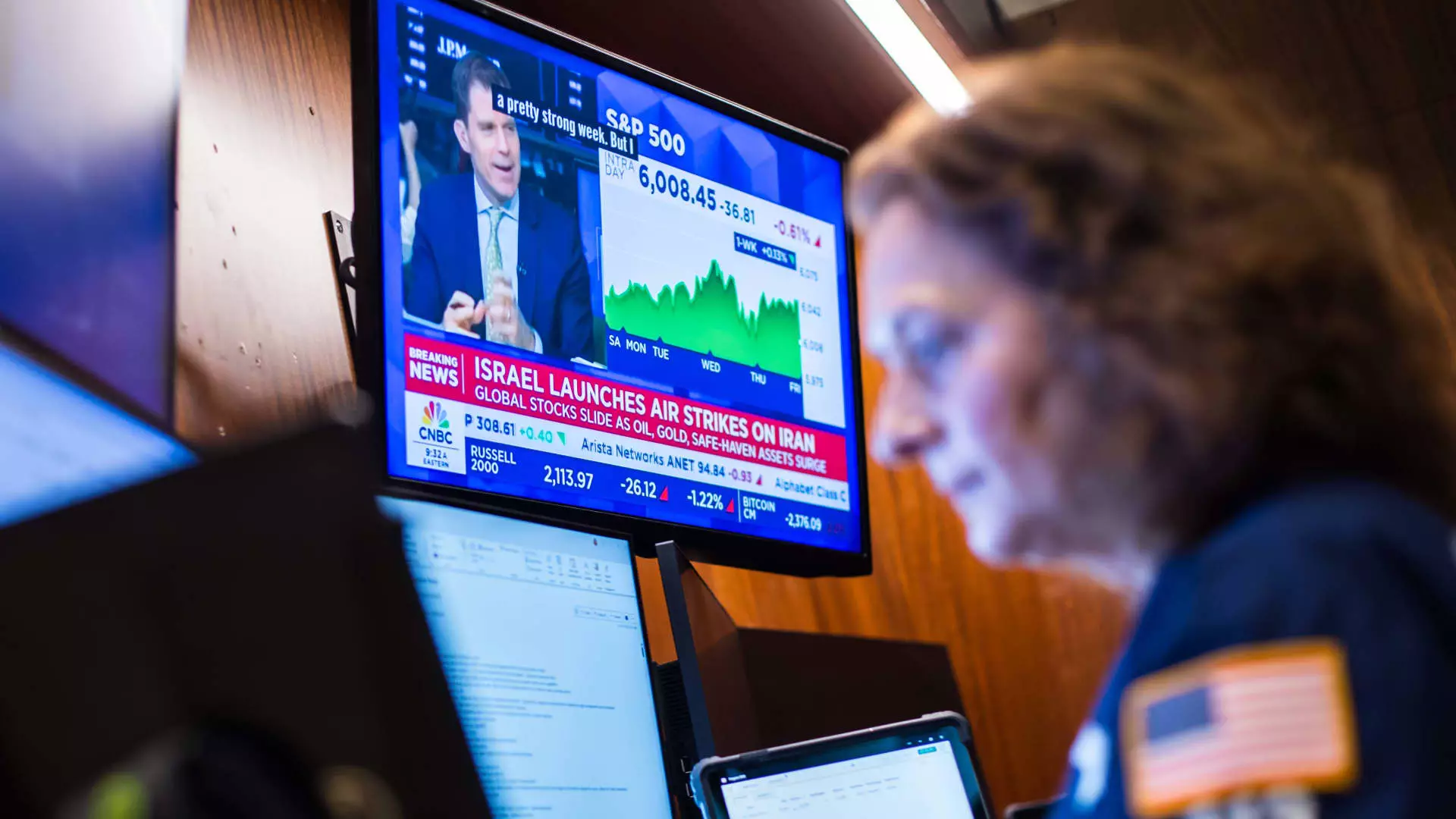The financial landscape is often likened to a delicate ecosystem, wherein a single disturbance can send ripples throughout its entirety. Such was the case last week as Israel’s airstrikes on Iranian nuclear facilities ignited a firestorm of volatility, sending U.S. stock markets tumbling into the red. With the S&P 500 and Nasdaq Composite recording losses of 1.13% and 1.3% respectively, investors were forced to confront the unsettling reality of geopolitical tensions and their ramifications on global financial stability.
The immediate aftermath of the strike witnessed a stark rise in crude oil prices, with Brent and West Texas Intermediate futures soaring by 7% and 7.5%. This wasn’t just a reaction to a spike in tensions—it was a sign that the markets had once again returned to their age-old, fear-driven habits. As uncertainty enveloped the geopolitical sphere, gold emerged as a beacon of security, reaching its highest value in two months. What seemed to be a week promising stability quickly morphed into chaos at second’s notice, underlining the market’s reliance on international relations as it scrambles for a sense of safety amid global instability.
Furthermore, the U.S. dollar index experienced a tough week despite a modest gain on Friday, emphasizing the complex interplay between domestic economic indicators and foreign policy developments. Investors, fearing that volatility could erode the value of their currencies, felt compelled to seek refuge in gold and other hard assets. Such reactions illustrate a recurring theme within the markets: they are easily swayed by headlines, often leading to knee-jerk reactions that can exacerbate volatility even further.
The Silver Lining: Economic Data and Inflation
While the geopolitical landscape unfurled chaotic and concerning narratives, there were flickers of optimism embedded within the economic data released mid-week. Both the consumer price index and the producer price index reported lower-than-expected inflation figures, raising hopes that inflation may be stabilizing, albeit slowly. Does this mean we are approaching a moment of relief for consumers grappling with rising prices? Potentially—yet one must remain cautious.
The labor market revealed similarly mixed signals, with jobless claims remaining stagnant while ongoing claims lingered at multi-year highs. This situation underscores an important truth: the U.S. economy is still managing a tenuous balance between inflation control and unemployment trends. It is imperative that policymakers tread carefully, for any misstep towards tightening monetary policy prematurely could send shockwaves through an already fragile job market.
While the data presents a cautiously optimistic picture, it is essential to recognize that temptation can lead to complacency. The interplay between inflation data and labor statistics must be monitored closely—a fine line exists between improvement and the dangers of overconfidence. We should rally for policies that not only address immediate concerns but also consider longer-term sustainability rather than mere short-term gains.
The AI Arms Race: Innovation vs. Adaptation
The revolution in generative artificial intelligence has continued to shape corporate strategies significantly. The proceedings of last week saw heavyweights like Apple, Meta, and Nvidia making headlines, but not always for the reasons one might expect. Apple’s annual developer conference, usually a highly anticipated event, fell flat without any groundbreaking AI updates. Despite expectations being muted, disappointment lingered, further fueling skepticism about whether the tech giant is losing its innovative edge.
Conversely, Meta Platforms sparked excitement by investing in Scale AI to accelerate its ambitions in artificial general intelligence (AGI). However, this underscores a worrying trend in the tech industry where the pressure to innovate can inadvertently prompt shortcuts, risking the ethical implications of untested technologies. As companies race to establish their dominion in the AI realm, it is vital to remember that hasty decisions may lead to unintended consequences, especially in sensitive areas like data privacy and misinformation.
The urgency is not confined to individual firms; the tech ecosystem is fraught with competitive urges that necessitate a systemic approach to innovation, one that must go hand-in-hand with ethical responsibility. Companies cannot afford to overlook the broader societal impacts while striving for technological advancements. Investing in AI should not merely be about competing for market share; there must also be a commitment to ensuring these advancements enhance human capability rather than overshadow it.
This precarious state of affairs within the market, characterized by geopolitical upheaval, uncertain economic indicators, and a frenetic pace of technological advancement, serves as a sobering reminder of the volatility that defines our times. As we navigate this chaos, it is crucial for both policymakers and corporate leaders to take a measured approach, seeking to strike a balance between progress and stability. The stakes are too high, and the repercussions of miscalculations could reverberate far beyond the stock market.


Leave a Reply